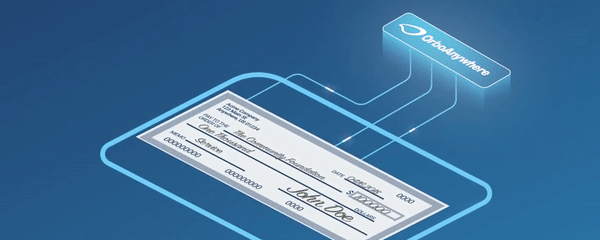FinCEN Alerts Banks to Pandemic Relief Payment Fraud
- Pandemic relief payments are predictably triggering escalated fraud attempts
- The Financial Crimes Enforcement Network has advised banks on specific "red flag indicators"
- Checks figure high on the list
The Financial Crimes Enforcement Network (FinCEN) recently issued an advisory to banks that outlined fourteen red flag indicators to be on the lookout for (and report) in association with pandemic-related economic relief payments.

“Advisory on Financial Crimes Targeting COVID-19 Economic Impact Payments” is based on FinCEN's “analysis of COVID-19-related information obtained from Bank Secrecy Act (BSA) data, public reporting, and law enforcement partners.”
The types of fraud that have been detected include:
- criminals sending fraudulent checks to potential victims, and then requesting personal information in order to cash them
- altering checks and depositing them via ATMs or mobile devices; counterfeit checks
- theft of economic relief payments from the U.S. mail
- phishing schemes using economic relief as the subject matter
- seizure of economic relief payments inappropriately (wage garnishment or debt collection)

FinCEN further outlines fourteen financial red flag indicators that include “fraudulent, altered, counterfeit, or stolen EIP checks, Automated Clearing House deposits and prepaid debit cards.”
A condensed summary of EIP-related fraud and theft includes the following:
- Fraudulent checks: Fraudsters send potential victims fraudulent checks, instructing the recipients to call a number or verify information online in order to cash the fraudulent EIP checks. Victims are asked for personal or banking information under the guise that the information is needed to receive or speed up their EIP. Fraudsters then use the information obtained to commit various crimes, such as identity theft and the unauthorized access of bank accounts.

- Altered checks: Fraudsters deposit altered EIP checks, often via automated teller machine (ATM) or mobile device. These altered checks may modify the name of the payee, or leave the name blank, and the amount may be altered prior to deposit. There is reporting of checks being chemically altered so the original payee is removed.
- Counterfeit checks: Fraudsters deposit counterfeit EIP checks, often via ATM or mobile device. Fraudsters have various methods to create a counterfeit check, including checks reproduced from digital images of checks issued by the U.S. Department of the Treasury. However, such counterfeit checks will often have irregularities involving the check number, paper, coloring, and/or font.
- Theft of EIP: Such thefts can include individuals stealing an EIP from the U.S. mail; requesting an EIP disbursal for an ineligible person; seeking another person’s EIP without the payee’s knowledge and/or approval, or through coercive means; or using stolen Personally Identifiable Information (PII), including providing false bank account information to the IRS to claim an EIP.

- Phishing schemes using EIP as a lure: Fraudsters perpetrate phishing schemes using emails, letters, phone calls, and text messages containing keywords such as “Corona Virus,” “COVID-19,” and “Stimulus,” with the purpose of obtaining PII and financial account information, such as account numbers and passwords.
- Inappropriate seizure of EIP: A private company that may have control over a person’s finances or serves as his or her representative payee seizes a person’s EIP, for wage garnishments or debt collection, and does not return the inappropriately seized payments.
Having been forewarned, banks are more prepared to fight check fraudsters who are taking advantage of the current crisis. Banks must continue to stay vigilant on fraud schemes, while investing in technologies like Image-analysis deploying the latest Forensic AI technologies to examine on-us and transit checks for identification of counterfeit check stock, forged check signatures, and amount alterations.
